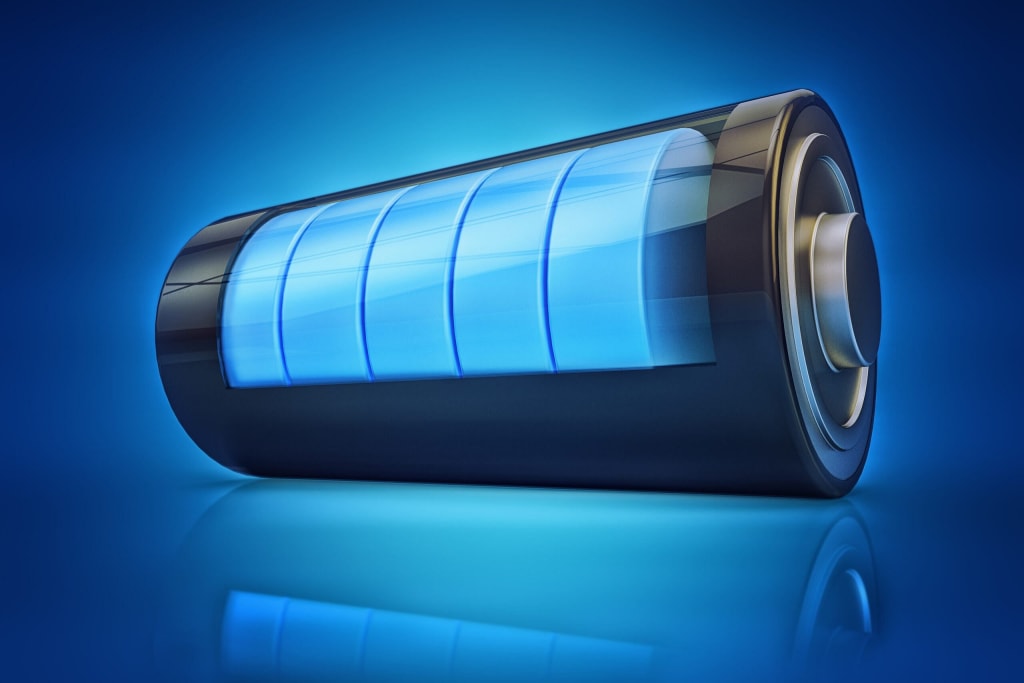Flow Battery: An Emerging Technology for Large-Scale Energy Storage
A flow battery is a type of rechargeable battery where chemical energy is provided by two chemical components dissolved in liquids contained within the system and separated by a membrane.

A flow battery is a type of rechargeable battery where chemical energy is provided by two chemical components dissolved in liquids contained within the system and separated by a membrane. These liquids flow through the system and react electrochemically, allowing the system to be "recharged" by replacing the liquid stores or by mixing new chemical components back into the liquid streams.
How Flow Battery Works
In a flow battery, the chemical energy is stored in chemical components dissolved in liquids contained in external tanks. These liquids are pumped from the tanks through the cell stack where the electrochemical reactions occur. In the cell stack, the liquids are separated by a membrane (solid or liquid barrier) that allows only the flow of ions between the two sides but prevents the mixing of the liquid electrolytes. During the charging cycle, an electrical current is applied which causes a chemical reaction that stores energy chemically in the electrolytes. During discharging, the flow is reversed and the chemicals react, releasing electrons and providing electrical energy. The key advantage of the Flow Battery architecture is that the power and energy capacities are independently scalable by increasing the size of the electrolyte storage tanks or the number of cells.
Advantages of Flow Battery
Long Cycle Life: Unlike lithium-ion batteries, flow batteries contain the active materials in liquid form stored outside the system. So cycle life depends more on the stability of liquid chemicals and membranes rather than solid electrode materials. Most flow batteries can achieve thousands of charge/discharge cycles.
Flexible Design: The power capacity can be increased by using multiple cells or stacks in parallel while energy capacity can be scaled up separately by increasing the size of the tanks independent of the stack size. This allows design flexibility.
Low Self-Discharge: Without solid electrodes and electrolytes contained in closed tanks, self-discharge rates are very low (<5% per month) compared to conventional batteries.
Safety: Absence of solid electrodes and storage of active materials externally makes flow batteries inherently safer than lithium-ion batteries in case of thermal runaway or overcharging. Membranes provide additional safety.
Deep Discharge Capability: Flow batteries can be completely drained of stored energy without capacity loss and can recharge back to full capacity. This allows utilizing the entire usable energy.
Applications of Flow Battery
Grid Energy Storage: Due to their multi-MWh scale and long duration discharge capabilities, flow batteries are ideally suited for bulk energy storage at the grid level - for load shifting, peak shaving, renewable firming etc. Several multi-MW commercial flow battery projects have been commissioned worldwide for these applications.
Microgrids and Off-Grid Systems: Flow batteries are used for stabilizing unreliable renewable energy sources and to provide backup power in off-grid and island microgrid installations. Their flexible scalable design makes them suitable for such decentralized off-grid applications.
Electric Transportation: With sufficient energy density and faster recharge times, flow batteries hold potential for electric vehicle charging stations, transport electrification in ports/logistics, material handling vehicles etc. R&D is on to develop improved flow batteries for such mobility applications.
Types of Flow Batteries
Vanadium Redox Flow Battery (VRFB): VRFB is the most commercially mature technology, with over 200MW of projects deployed globally. It uses vanadium ions in different oxidation states dissolved in an aqueous electrolyte. Operating temperature: 15-40°C, Energy density: 15-25kWh/m3.
Zinc-Bromine Flow Battery: The zinc-bromine battery has one of the highest energy densities (30-50kWh/m3) but its electrolytes are toxic and corrosive. It works at room temperature with zinc and bromine as active materials.
Hybrid Flow Battery: These systems use at least one liquid and one solid active material to combine the advantages of both flow battery and solid electrode battery concepts like lithium-ion. Research is ongoing to develop such hybrid systems.
Other flow battery chemistries being researched are based on iron-chromium, polysulfide-bromine, cerium-zinc etc. but are currently at lower technology readiness levels.
Future Outlook and Challenges
With global commitments to accelerate clean energy transition and massive deployments of renewables, flow batteries are poised for significant market growth to meet the fast-rising demand for large-scale energy storage solutions worldwide. Although VRFB is the leading technology currently, improved chemistries promising higher energy density and lower costs will drive future adoption across more applications.
Addressing issues like increasing energy densities, reducing material costs, improving membrane durability are active areas of R&D. Standardization of designs, manufacturing processes and supply chains are other challenges that need to be overcome before flow batteries can realize their full potential at widespread commercial and grid scales. With increasing investments and technological advancements, flow batteries are expected to play a major role in enabling a renewable-based electricity grid in the coming decades.
Get more insights on Flow Batteries





Comments
There are no comments for this story
Be the first to respond and start the conversation.